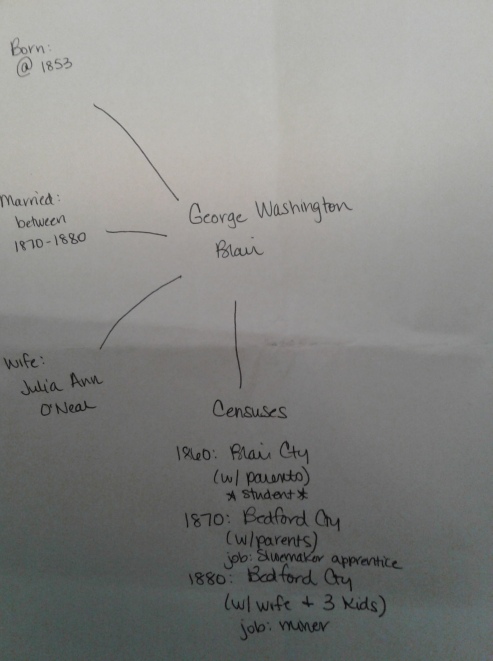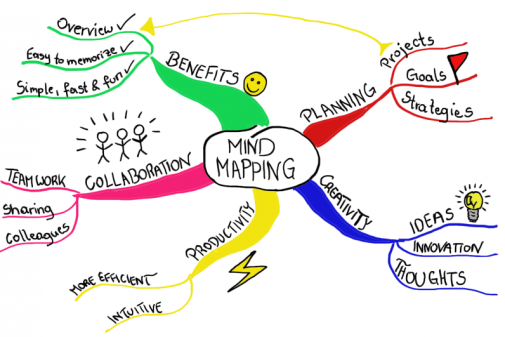I’m presently taking a class on genealogy and one of the things they briefly went over in last week’s portion is mind mapping. I’ll be honest, I never really knew what mind mapping was, now I could sum it up to it being brainstorming on a piece of paper. But I decided to take a little more in-depth examination of mind mapping and how it can help you with your family history research.
What is Mind Mapping
Using the Wikipedia definition, a “mind map is a diagram used to visually organize information”. It’s hierarchal and shows relationships among the pieces of the whole. According to MindMapping.com, it’s a “highly effective way of getting information in and out of your brain” as it’s both creative and logical at the same time. Mind maps are illustrations of what you are thinking.
Which goes back to my original statement of it being like brainstorming on a piece of paper.
Characteristics of Mind Mapping
There are certain characteristics that each mind map must possess.
Main Idea
Each mind map has a main idea. It’s the theme of what your mind map is about.
Branches
These are the main ideas that branch off of your main idea that create connections.
Keywords
These words or ideas that support or describe your main idea are summarized into keywords, no sentences allowed.
Twigs
Lastly, you have less important ideas that aid in describing the keywords, and these branch off onto smaller lines, or twigs.
Creating Mind Maps
There are different ways to create mind maps. You can draw from hand (I apologize for my bad photo – somehow my paper got folded but something told me trying to re-write it wouldn’t work as I’d probably just mess it up and get totally frustrated).

Mind maps can also be made with computer software. Some of the software that you can use are the following: Coggle, Mindly, Draw.io, iMindMap, MindMup, MindMeister, Scapple, and SmartDraw to name just a few.

Using Your Mind Map
Mind mapping is a tool that helps make you a better thinker. When you come across a problem, even something that really has you stumped like a brick wall, write it down, all of it, you may just get pointed in the right direction on where to look next.
The one I did above is one of my brick walls, which actually leads to a bigger brick wall. George Washington Blair is the 4th child of my great-great-great-grandparents. I only have 1 death certificate listing my 3x-great-grandmothers name and I strongly feel that if I can find George Washington Blair’s death certificate, that maybe it will give me some insight on my 3x-great-grandparents.
A mind map isn’t going to solve your problems, but it will allow you to see your information in a logical flow and give you the opportunity to see what you still need to find, and then you can best decide where to go to seek your answers.
Good luck!

I think we’re currently taking the same class. Great course!
LikeLiked by 1 person
Genealogy: Researching Your Family Tree by the University of Strathclyde? I am so enjoying it. There is a lot I am already aware of but I wanted to take the class because there are little things that are being pointed out, or stuff I know but don’t always think to do that they are addressing and it is allowing me to think about my own research a little differently.
LikeLiked by 1 person
That’s the one. I’m enjoying it too. It really is well put together. I’m looking forward to seeing what the second half of the course has to offer.
LikeLike